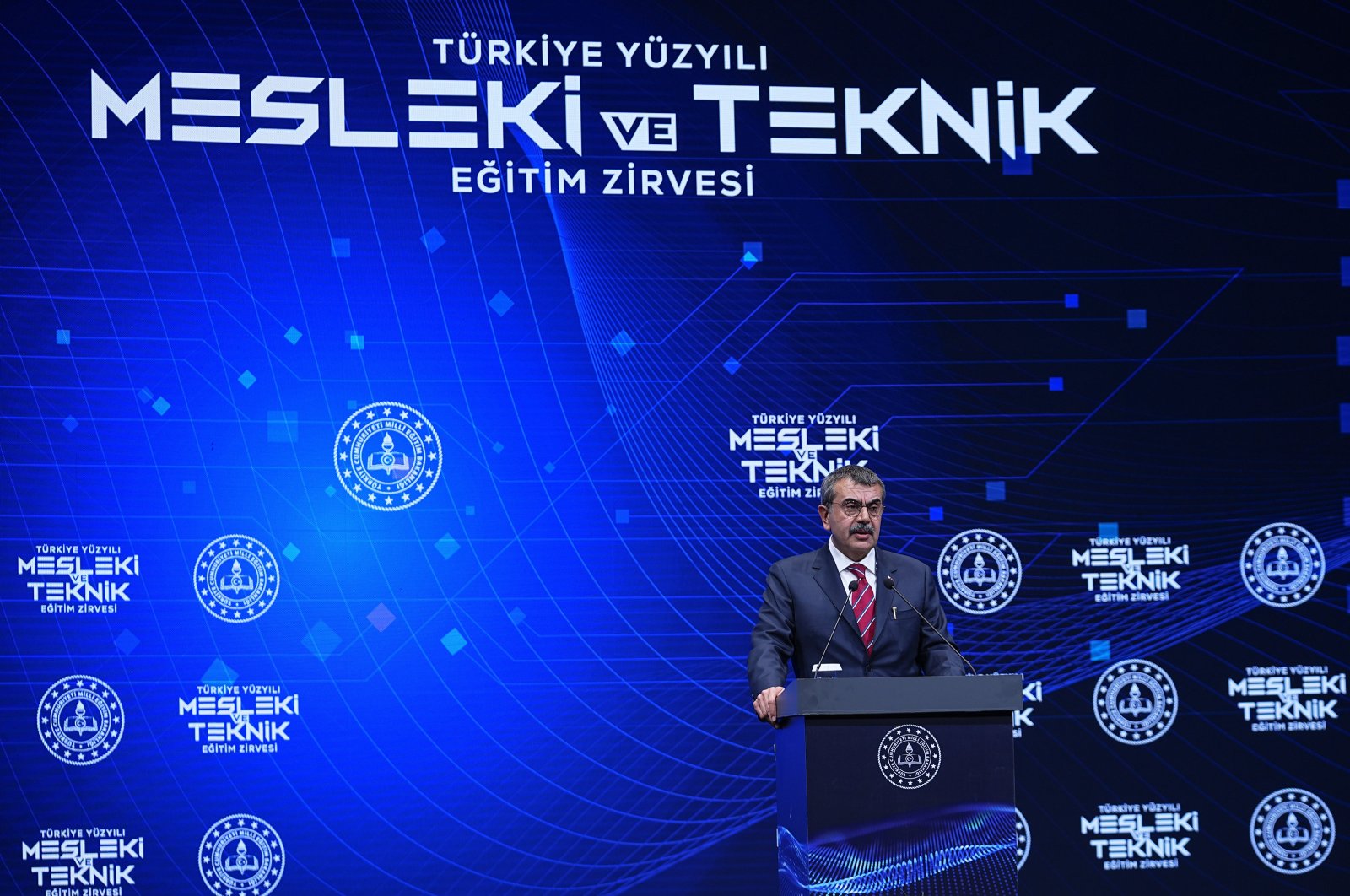N.Y. colleges to invest $195M in campus upgrades with state grant support – SILive.com

New York State Investment in Higher Education Aligns with Sustainable Development Goals
A recent investment by New York State through the Higher Education Capital Matching Grant Program (HECap) directly supports several United Nations Sustainable Development Goals (SDGs). A total of $49 million in state funding has been allocated to 35 private, not-for-profit colleges and universities, leveraging a total investment of over $195 million for campus and equipment upgrades.
Fostering Quality Education and Innovation (SDG 4 & SDG 9)
The primary objective of the funding is to enhance educational infrastructure, which is central to SDG 4: Quality Education and SDG 9: Industry, Innovation, and Infrastructure. By modernizing classrooms, laboratories, and technological facilities, the initiative ensures students have access to high-quality learning environments and tools necessary for success. The investment promotes innovation and scientific research, key components of building resilient infrastructure and fostering a knowledge-based economy.
Project Allocations Supporting Educational and Technological Advancement
- Clarkson University: $5 million for Phase One Renovations to the Engineering and Science Complex.
- Hobart and William Smith Colleges: $5 million for the construction of a new Science Building and adjacent facilities.
- D’Youville University: $5 million for renovations to a building supporting The College of Osteopathic Medicine.
- St. John’s University: $1.85 million for renovations to create a Technology Hub in Marillac Hall.
- Cornell University: $1.75 million for library renovations.
- Long Island University: $1.5 million for the construction of a Lab for Immersive and Experiential Learning.
Driving Economic Growth and Workforce Development (SDG 8)
The initiative is designed to prepare students for future success and strengthen local communities, aligning with SDG 8: Decent Work and Economic Growth. By funding projects that directly address workforce needs, the state is investing in human capital and promoting economic opportunity. A key example is the funding for Molloy University, which directly targets the development of a skilled workforce.
- Molloy University: $5 million for the construction of the Center for Workforce Development in Applied Laboratory Sciences.
Strengthening Communities through Public-Private Partnerships (SDG 11 & SDG 17)
This program exemplifies SDG 17: Partnerships for the Goals through its public-private funding model. The grant’s structure contributes to the development of sustainable and resilient communities, a core tenet of SDG 11: Sustainable Cities and Communities, by strengthening the educational institutions that serve as community anchors.
- State Contribution: The HECap program provides $1 in state funds for projects.
- Institutional Match: Recipient campuses are required to invest a minimum of $3 of their own funds for every $1 received.
- Total Impact: This partnership model results in a significant multiplier effect, turning a $49 million state investment into a total project value of over $195 million, thereby maximizing the impact on educational infrastructure and community development.
Analysis of Sustainable Development Goals (SDGs) in the Article
1. Which SDGs are addressed or connected to the issues highlighted in the article?
-
SDG 4: Quality Education
- The article is centered on providing funding to colleges and universities to “upgrade campuses and their equipment.” This directly supports the goal of ensuring inclusive and equitable quality education by improving the physical learning environment and resources available to students.
-
SDG 8: Decent Work and Economic Growth
- Governor Hochul’s statement explicitly links the investment to “economic opportunity.” The funding for projects like the “Center for Workforce Development in Applied Laboratory Sciences” at Molloy University is a direct effort to equip students with relevant skills for employment, contributing to economic growth.
-
SDG 9: Industry, Innovation, and Infrastructure
- The article details significant investment in building and renovating infrastructure essential for innovation, such as science complexes, technology hubs, and laboratories for immersive learning. This fosters an environment for scientific research and technological advancement, aligning with the goal of building resilient infrastructure and promoting innovation.
-
SDG 17: Partnerships for the Goals
- The funding mechanism, the Higher Education Capital Matching Grant Program (HECap), is a clear example of a public-private partnership. The state provides public funds, which must be matched by the private, not-for-profit institutions, leveraging government investment to mobilize larger resources for sustainable development.
2. What specific targets under those SDGs can be identified based on the article’s content?
-
Target 4.a: Build and upgrade education facilities that are child, disability and gender sensitive and provide safe, non-violent, inclusive and effective learning environments for all.
- The core of the article is about the $195 million investment used for “renovations to the Engineering and Science Complex,” “construction of a New Science Building,” and creating a “Technology Hub.” These actions directly correspond to building and upgrading education facilities to create more effective learning environments.
-
Target 4.4: By 2030, substantially increase the number of youth and adults who have relevant skills, including technical and vocational skills, for employment, decent jobs and entrepreneurship.
- The construction of the “Center for Workforce Development in Applied Laboratory Sciences” and a “Lab for Immersive and Experiential Learning” is specifically aimed at providing students with the relevant, hands-on skills needed for the modern job market.
-
Target 9.5: Enhance scientific research, upgrade the technological capabilities of industrial sectors… including… encouraging innovation and… increasing… public and private research and development spending.
- The funding for renovating science complexes, building new science facilities, and creating technology hubs directly contributes to upgrading the technological capabilities and research infrastructure at these universities, thereby encouraging innovation. The total investment of over $195 million represents an increase in public and private R&D spending.
-
Target 17.17: Encourage and promote effective public, public-private and civil society partnerships, building on the experience and resourcing strategies of partnerships.
- The article describes a partnership where state funds are matched by the recipient institutions. The rule that “Campuses that receive HECap grants are required to invest at least $3 of their own funds for every $1 in state funds received” perfectly illustrates a public-private partnership designed to mobilize financial resources for development projects.
3. Are there any indicators mentioned or implied in the article that can be used to measure progress towards the identified targets?
-
Indicator for Target 4.a: Total financial investment in educational facilities.
- The article explicitly states the total investment is “over $195 million,” with “$49 million” coming from the state grant program. This monetary value is a direct indicator of the resources allocated to upgrading educational infrastructure.
-
Indicator for Target 9.5: Public and private expenditure on research and development (R&D).
- The article provides figures for both public ($49 million) and private (at least $146 million, to make a total of over $195 million) spending on infrastructure that supports R&D and innovation, such as science labs and technology hubs.
-
Indicator for Target 17.17: Amount of U.S. dollars committed to public-private partnerships.
- The total mobilized investment of “over $195 million” resulting from the HECap program serves as a clear indicator for this target. The article also provides the specific leverage ratio of the partnership (1:3 public to private funding).
-
Implied Indicator for Target 4.4: Number of new facilities dedicated to workforce development.
- While not providing a final count, the article mentions the “Construction of the Center for Workforce Development in Applied Laboratory Sciences” and a “Lab for Immersive and Experiential Learning.” The number of such facilities created through the funding can be used as an indicator of progress in providing skill-based training.
Summary of Findings
| SDGs | Targets | Indicators |
|---|---|---|
| SDG 4: Quality Education | Target 4.a: Build and upgrade education facilities… and provide… effective learning environments for all.
Target 4.4: Substantially increase the number of youth and adults who have relevant skills… for employment. |
Total financial investment in educational facilities (over $195 million).
Number of new facilities dedicated to workforce development (e.g., Center for Workforce Development, Lab for Immersive Learning). |
| SDG 8: Decent Work and Economic Growth | (Related to Target 4.4) The article supports the goal of promoting policies that create decent jobs and foster economic opportunity through education and workforce development. | The creation of a “Center for Workforce Development” is mentioned as a project outcome. |
| SDG 9: Industry, Innovation, and Infrastructure | Target 9.5: Enhance scientific research, upgrade the technological capabilities… increasing… public and private research and development spending. | Amount of public and private expenditure on R&D infrastructure ($49 million public, over $195 million total).
Number of new/upgraded research facilities (e.g., science complexes, technology hubs). |
| SDG 17: Partnerships for the Goals | Target 17.17: Encourage and promote effective public, public-private and civil society partnerships. | Amount of financial resources committed to a public-private partnership (over $195 million).
The matching fund ratio ($3 private for every $1 public). |
Source: silive.com
What is Your Reaction?
 Like
0
Like
0
 Dislike
0
Dislike
0
 Love
0
Love
0
 Funny
0
Funny
0
 Angry
0
Angry
0
 Sad
0
Sad
0
 Wow
0
Wow
0
















































:focal(1500,1000)/https://media.globalcitizen.org/a6/9a/a69a4720-d8a1-4715-b596-18738d03c05c/rotary_polio_hero_image.jpg?#)







/countries/sri-lanka/photo-credit---dmc-sri-lanka.tmb-1200v.jpg?sfvrsn=dc298bcc_1#)

















